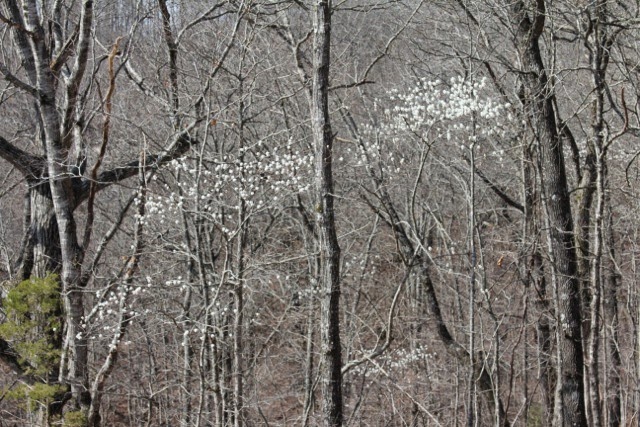Serviceberries are blooming, the first of the cascade of flowering trees to be followed by dogwood and redbuds. We consider them Mother Nature's answer to the plague of callery (aka Bradford) pear trees. The flowers are small and delicate, a wisp of color among the oaks and hickories which are just awakening. They whisper the promise of spring rather than shouting like a Bradford pear.
There are approximately 20 species in the Amelanchier genus, many of which confuse even the experts, as the trees tend to hybridize. Our local species is the downy serviceberry, Amelanchier arborea. They have almost as many common names as there are species, including sarvis or sarviseberry, Juneberry and shad bush. According to Wildman Steve Brill:
"The shrub is called the juneberry because the fruit ripens in June. It's also called serviceberry because it blooms in mid-April, when long-delayed religious services were held throughout 19th century New England, as snow covered roads became accessible again. But not everyone was religious, and others would just as soon go fishing, especially when the first run of shad migrated upstream from the ocean, heralded by the blooming shadbush."
Mark Bower sent me these pictures with a note that you can eat the berries.
The MDC page states that their berries can be sweet and great for baking and snacking. Certainly wildlife enjoys them as 35 species of birds devour them at a time when few fruits are available and over a dozen mammals eat the fruit or the tender young leaves when little else has sprouted.
 |
| Wasp nectaring on serviceberry |
 We saw this very distinctive bark on a November mycological survey at Mark Bower's land above Bull Creek. Frances Main identified the photograph as serviceberry with its distinctive young smooth bark turning into darker gray with shallow grooves and long ridges. I think I will be able to recognize it even when I can no longer remember the name of Allan What's-his-name.
We saw this very distinctive bark on a November mycological survey at Mark Bower's land above Bull Creek. Frances Main identified the photograph as serviceberry with its distinctive young smooth bark turning into darker gray with shallow grooves and long ridges. I think I will be able to recognize it even when I can no longer remember the name of Allan What's-his-name.

